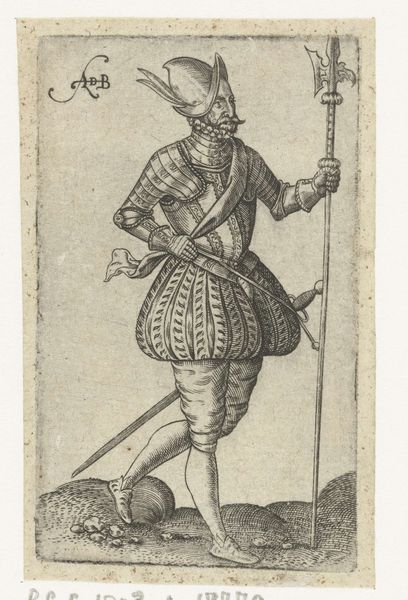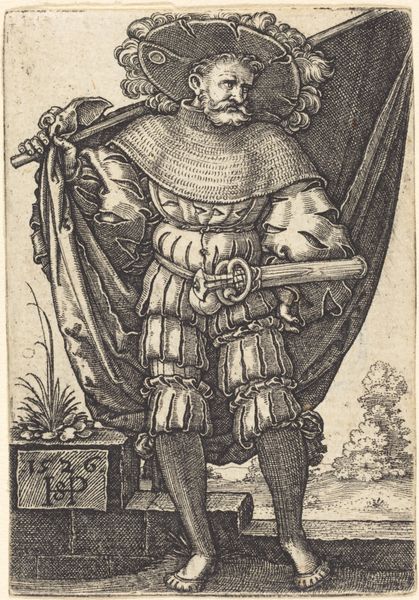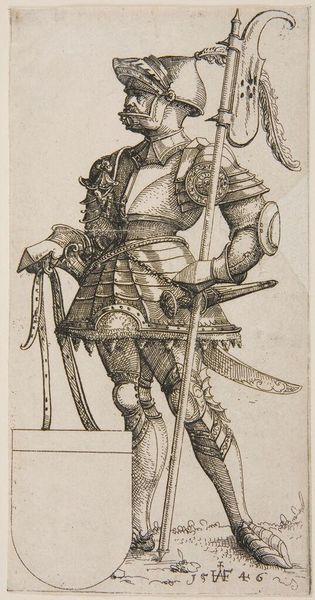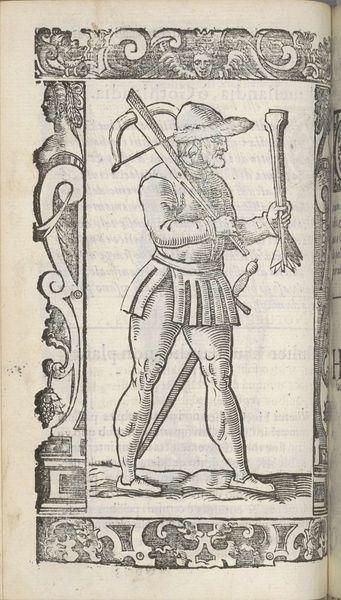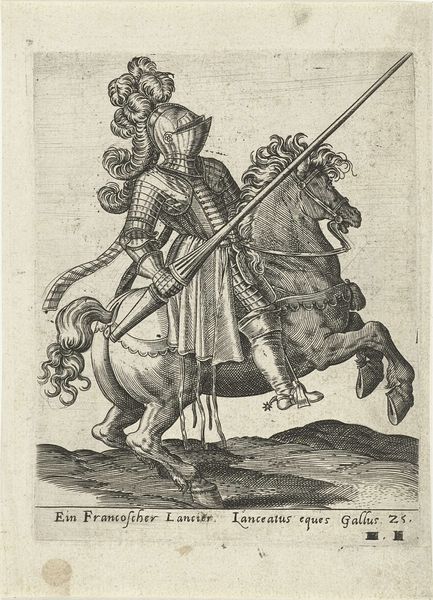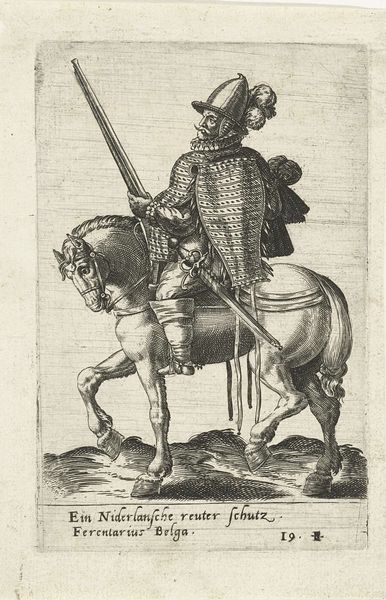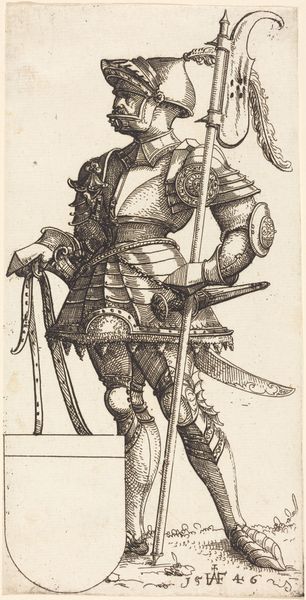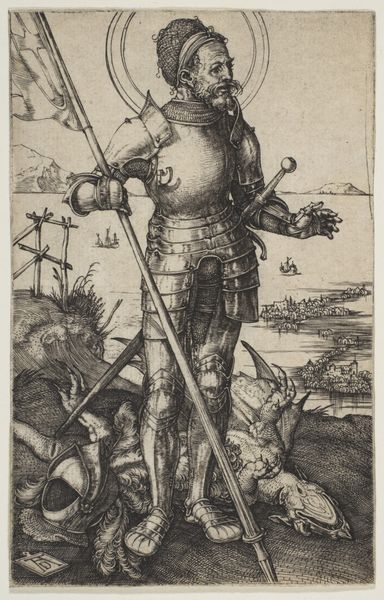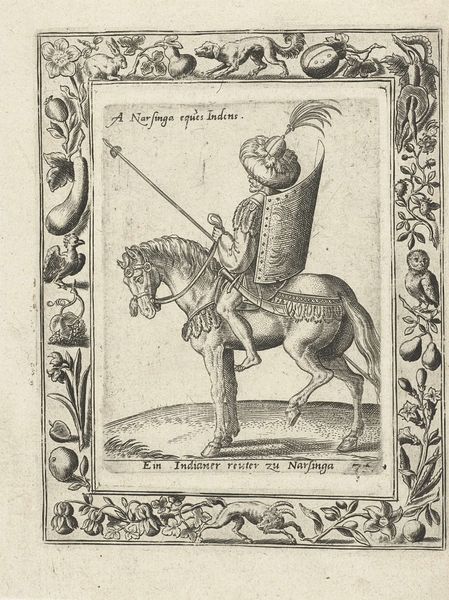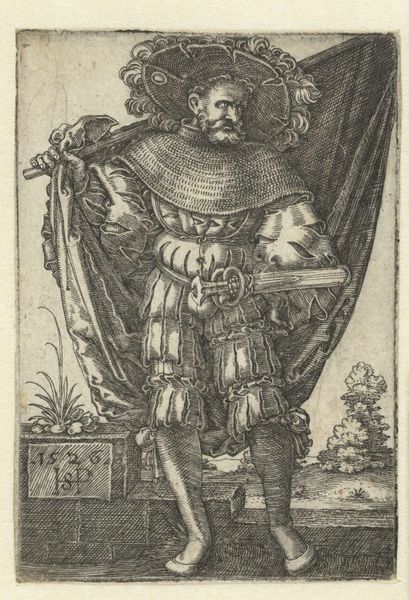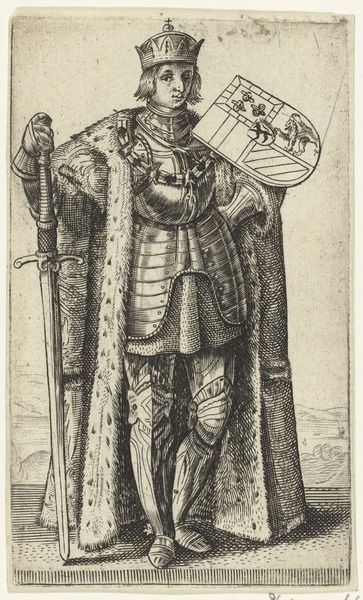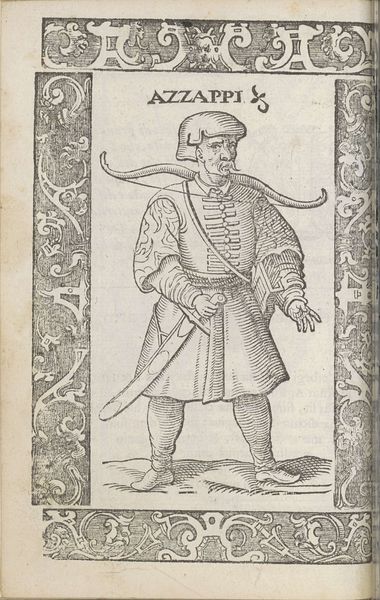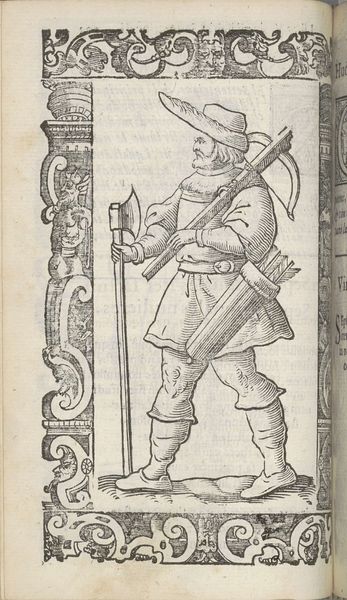
drawing, print, ink, engraving
#
drawing
#
pen drawing
# print
#
figuration
#
11_renaissance
#
ink
#
history-painting
#
engraving
Dimensions: height 75 mm, width 34 mm, width 29 mm
Copyright: Rijks Museum: Open Domain
Curator: Standing here before this striking print, "Saint George and the Dragon," one is immediately drawn into the meticulous detail. It comes to us from an artist known only as Monogrammist AC, dating from around 1520 to 1562. What do you make of it? Editor: It’s fierce! The rendering feels so old, right? In terms of the political atmosphere in Europe and elsewhere, these stories about these great conquering figures continue to speak volumes and it's exciting to view it here in the Rijksmuseum. Curator: Absolutely. Considering the period, the meticulous use of engraving truly shines. Think about the role images like this played—circulating ideas of religious virtue and earthly power. The narrative of Saint George, a Christian knight slaying a dragon to save a princess, became a popular allegory. What resonates is the socio-political context... the way these tales were employed to legitimize power structures. Editor: And looking closer, it's interesting how the figure of Saint George is constructed, isn't it? Look at that very stiff, stoic stance, that is very representative of this timeframe. I also like seeing some detail in the ocean setting that has a cross or some religious element added on top of it to ensure some holiness into the piece. How fascinating to observe how religion weaves through artwork and storytelling in so many cultural ways. Curator: That's precisely what makes prints like these so historically significant. They're not just aesthetically pleasing; they served as vehicles for disseminating ideology. Consider who could afford to own and distribute prints, what social circles this kind of depiction was common within, and suddenly, we gain so much more insight. Editor: Indeed. It's a reflection of power structures and ideals, circulated among those with the means to consume them. It underscores the power of visual narratives in shaping our collective understanding of history. The question of visual justice seems pertinent here, as a result. Are these renderings giving everyone a voice, or furthering an ideology that continues to permeate through cultural and institutional landscapes? Curator: I find myself now thinking again about what this print says about the place and era in which it was made, the institutions it was designed to bolster. There's so much more than the initial, rather charming presentation to be gleaned. Editor: I agree. I will continue to consider how representations like these weave their way into historical perspectives to construct the sociopolitical reality that we navigate today.
Comments
No comments
Be the first to comment and join the conversation on the ultimate creative platform.
